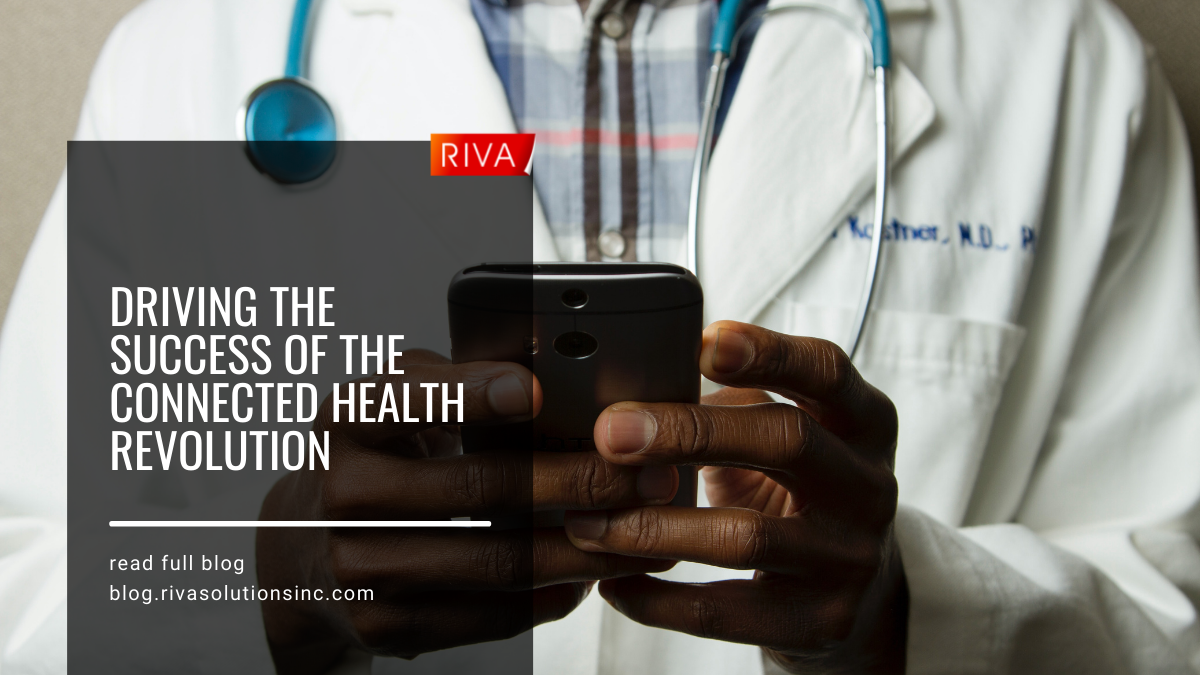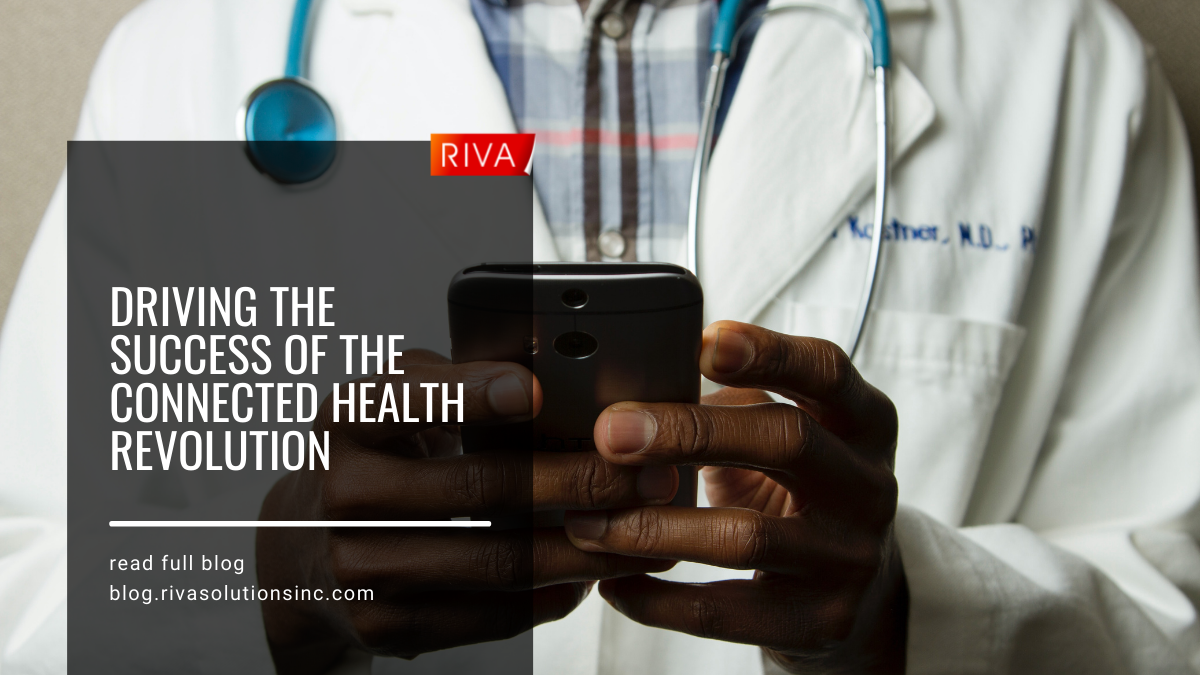Connected health is a socio-technical model for healthcare management and delivery that uses technology to provide healthcare services remotely. Telehealth, mobile apps, remote patient monitoring and other digital tools, as well as the advancement of artificial intelligence and machine learning (AI/ML) tools in healthcare, offer the potential to use technological innovations to develop proactive, connected healthcare models that are built around patients’ needs. The urgency of the connected health revolution has been spurred on by the COVID-19 pandemic, and it is key to enhancing patient engagement, effectively sharing health data for proactive care, and moving towards more value-based and preventive care.
The pandemic triggered an increased adoption of telehealth - visiting your doctor via video call rather than in the office. Increasingly, providers are also able to share information with each other, such as for remote consultation on patient care and treatment. Staying at home for healthcare appointments also helps limit the spread of illnesses such as COVID-19 and the flu. Another benefit is that patients who lack transportation or do not have a provider in their area can be reached through telehealth. Hal Wolf, President and CEO of the Healthcare Information and Management Systems Society (HIMSS) shared during the HIMSS21 Digital Conference that telehealth visits went up from 0.2% to 14% in just a few months last year, and investment in digital health solutions was at $14B in 2020, twice that of 2019, and continues to grow. Telehealth is a hot topic, and it is just one aspect of the move toward a more connected model for healthcare.
Connected health has great potential to improve health equity, and IT companies play an important role in this. In addition to factors such as employment status and income level, inequity in healthcare resources in the United States can be caused by lack of insight into health issues in a population or community. Process maturity and transparency to reduce equity biases are also essential to equitable healthcare. Companies like RIVA are developing AI/ML solutions to collect and analyze data so that the government can make informed decisions on where to focus its resources on improvements.
RIVA is helping our government partners leverage large volumes of health data and transform it into knowledge and valuable insights so clinicians and researchers can find the information they need quickly and easily. For example, at the Agency for Healthcare Research and Quality (AHRQ), RIVA is using Tableau and Google analytics for enhanced data visualizations. We are also working to transform the digital experience at AHRQ by maintaining and upgrading websites and establishing an optimized DevSecOps framework for faster and more efficient access to data - ultimately improving interoperability.
A key element of connected health, interoperability is the ability of two or more systems to access and exchange information and use it effectively. Interoperability allows for the secure exchange of data to different platforms and providers. This exchange of quality data can be used to improve public health by helping experts analyze health trends in a given population. The biggest obstacle to achieving interoperability is that many health IT systems cannot “talk” to each other because they were not built to be interconnected. The challenge for health IT companies, then, is solving the problem of how best to connect these systems.
Recognizing this issue, the 21st Century Cures Act of 2016 included several provisions to improve healthcare IT and promote greater interoperability. However, the COVID-19 pandemic has highlighted the gaps in health equity and underscored how far we still have to go to improve interoperability, making it a higher priority for healthcare experts and government officials.
The health IT industry can improve interoperability through standardizing data, providing training, creating a collaborative culture, eliminating duplication, effectively handling large data sets, and streamlining the way we receive data. An example of this would be implementing the FHIR (Fast Healthcare Interoperability Resources) interoperability standard for electronic exchange of healthcare information.
Furthermore, something that would dramatically enhance connected healthcare is a universally unique identifier, a single identifier (like a social security number) that recognizes each patient’s identity across different platforms. In October of this year the Senate removed a ban from the HHS appropriations bill that had been in place since 1999 on using federal funds to create a universal patient identifier, a move applauded by many in the health IT industry. Often, clinicians are giving care with incomplete patient records, so many healthcare experts agree that developing a universally unique identifier would greatly improve care and safety. Providers would be able to access a patient’s complete medical history, no matter where they obtained care in the past – a CVS minute clinic, VA hospital, drive-through vaccination site, emergency room, or their family doctor’s office.
One of the challenges of achieving a fully connected healthcare utopia is security. Many clinicians and patients are concerned about the security of healthcare data and technology, and healthcare facilities are often targets for cyber-attacks. To address this widespread concern, investments must be made in tech education for healthcare professionals so that they can successfully use the technology and to ensure the security of the systems. Also essential to ensuring the security of connected health systems is transparency in the process - from the collection of sensitive data to how it is stored and shared, and the protocols taken to actively protect it.
Connected health and the need for telehealth will not lessen with the ‘end’ of the pandemic, but will only increase as user preferences change. The trend toward more virtual telehealth appointments is rising with the generational shift; many people, especially those who belong to younger generations, often prefer the safety, efficiency, and convenience of a telehealth appointment. The health IT industry is helping move the connected healthcare revolution forward to address the health inequities that the pandemic uncovered and highlighted.
The health IT industry’s top concern should be increased investment in delivery of care and digital health for continuous care, emphasis on data quality, privacy, and security. Advancements in health IT interoperability and data accessibility will also trigger further innovation in the digital healthcare space. The success of the connected health revolution is critical to enhancing patient engagement, access to care, and patient safety.



Leave Comment